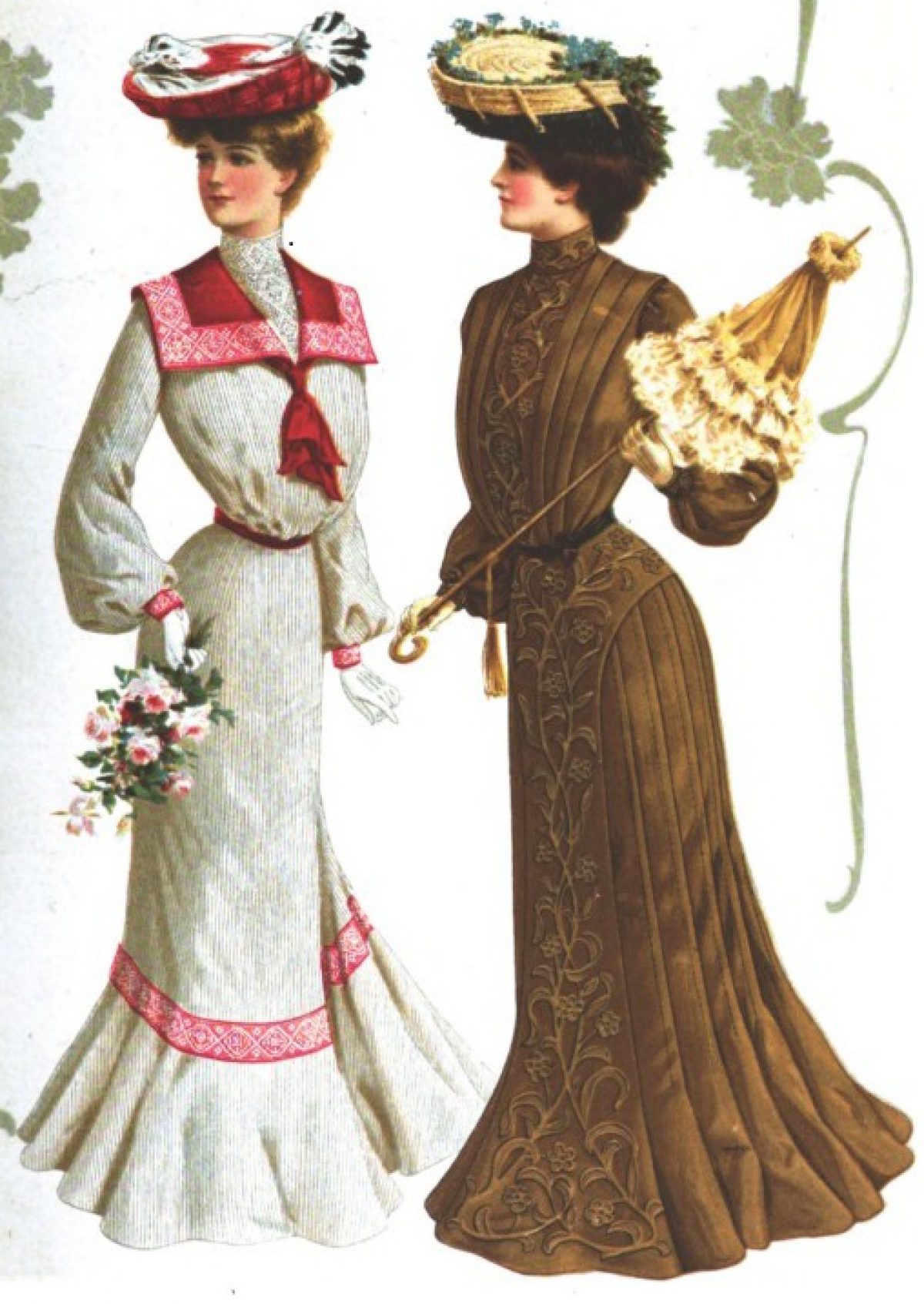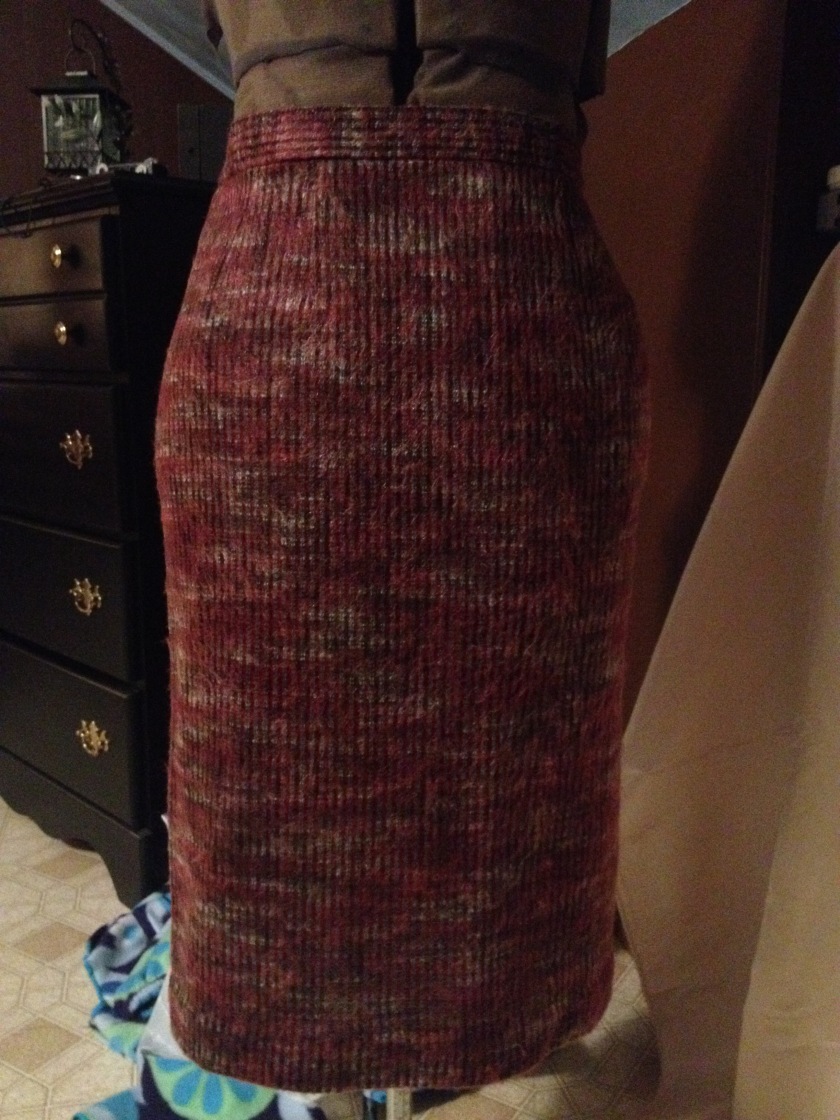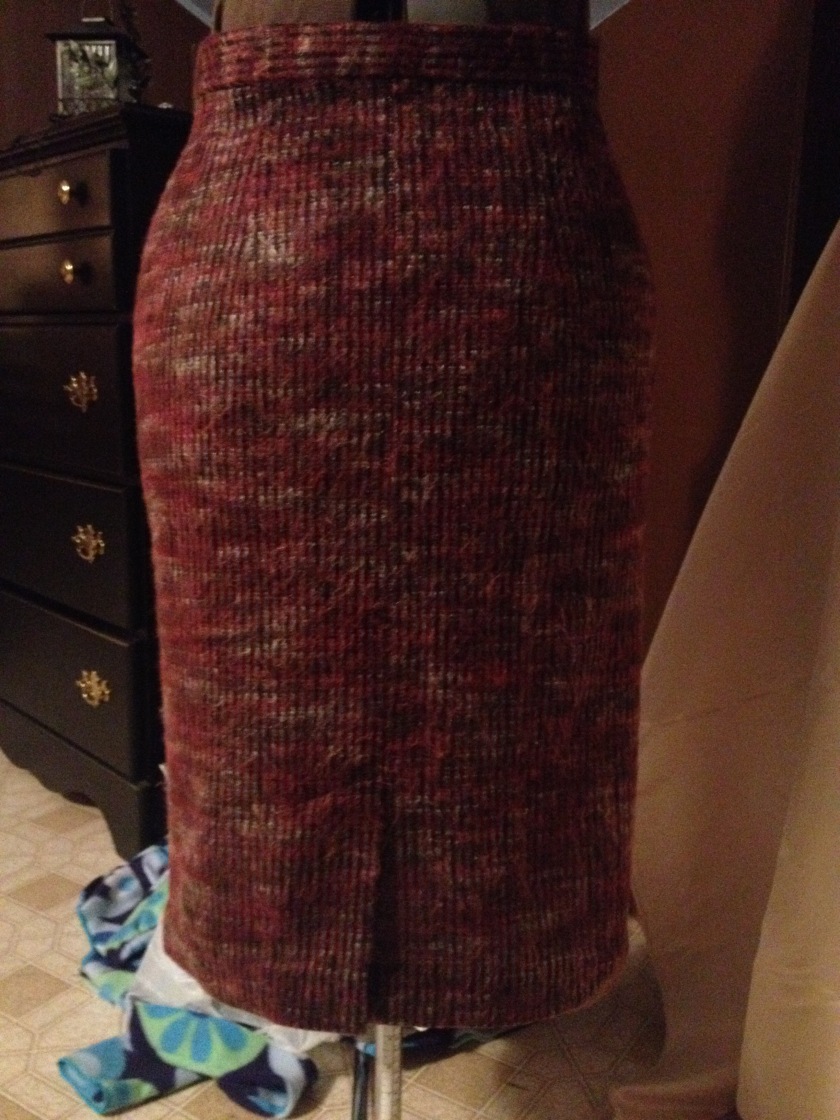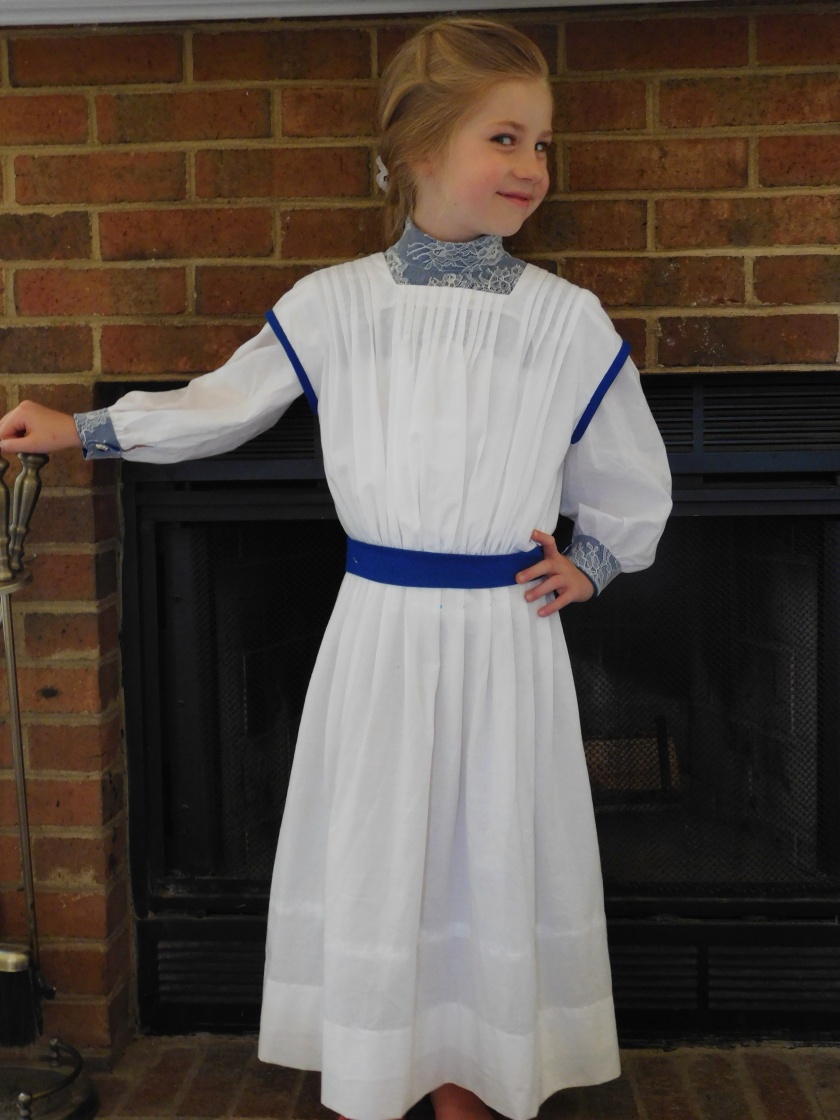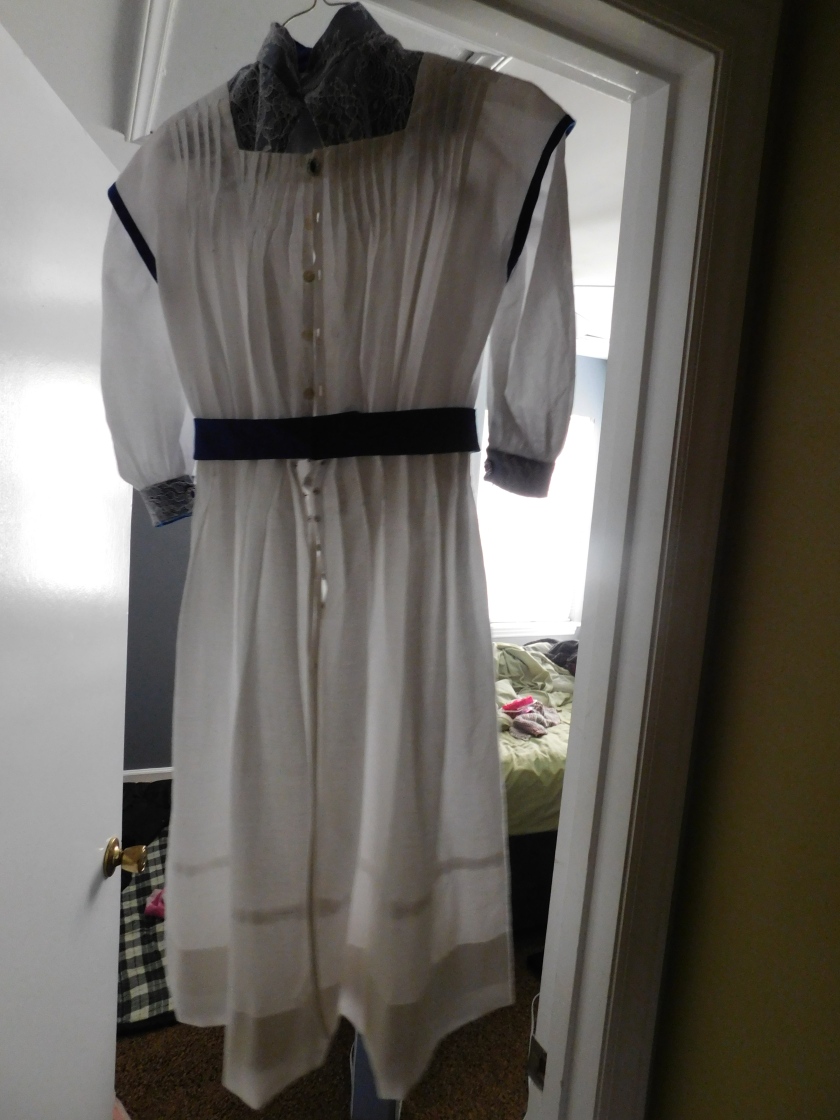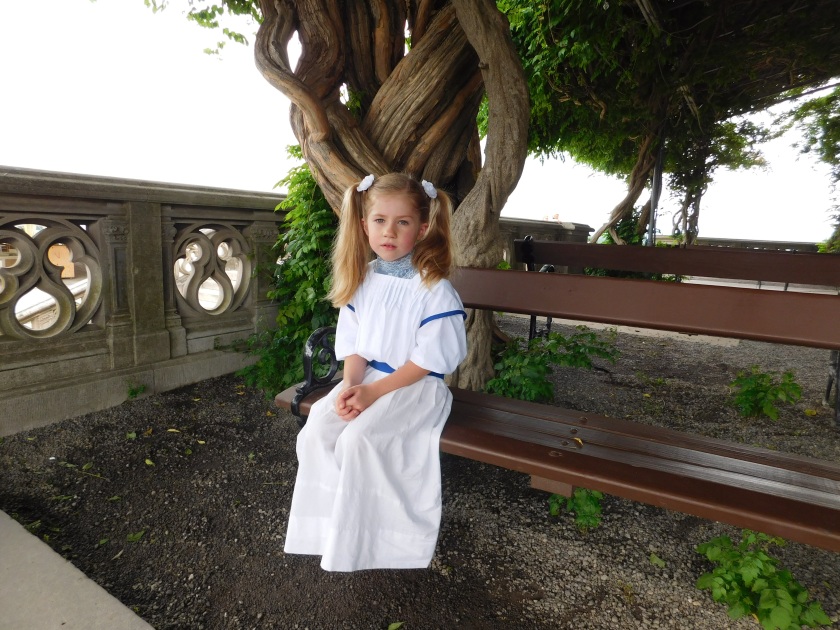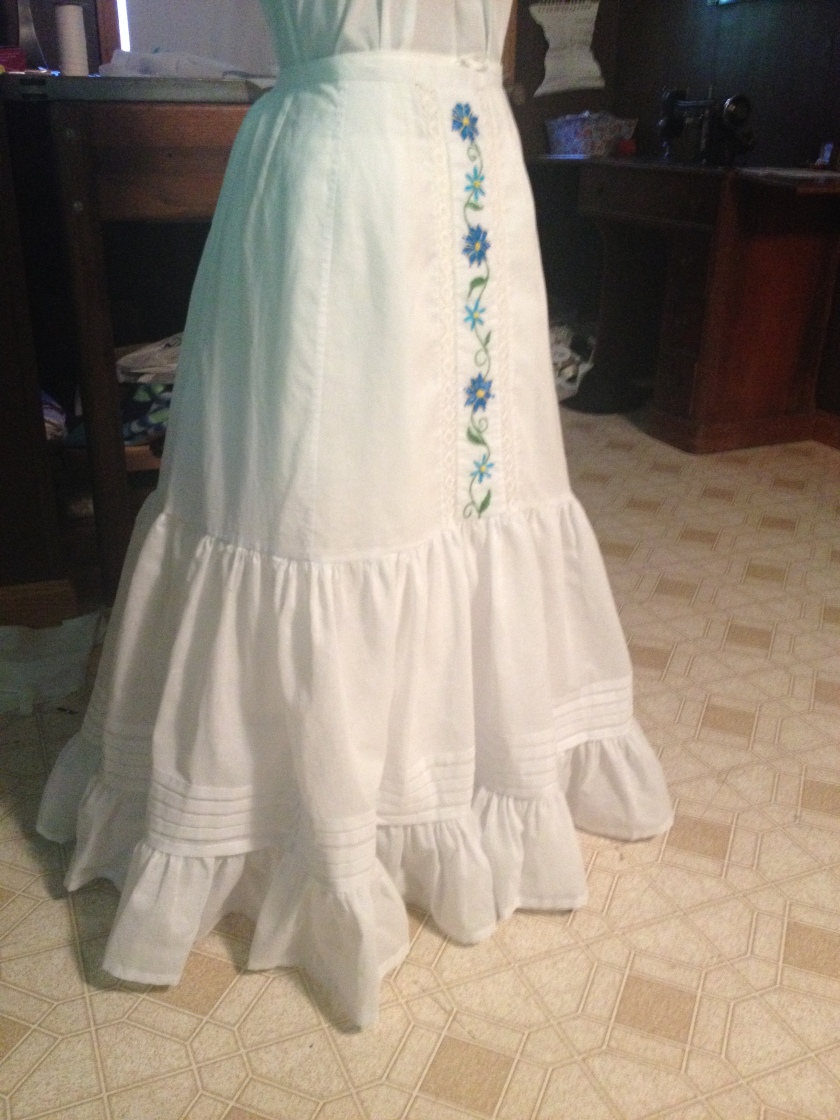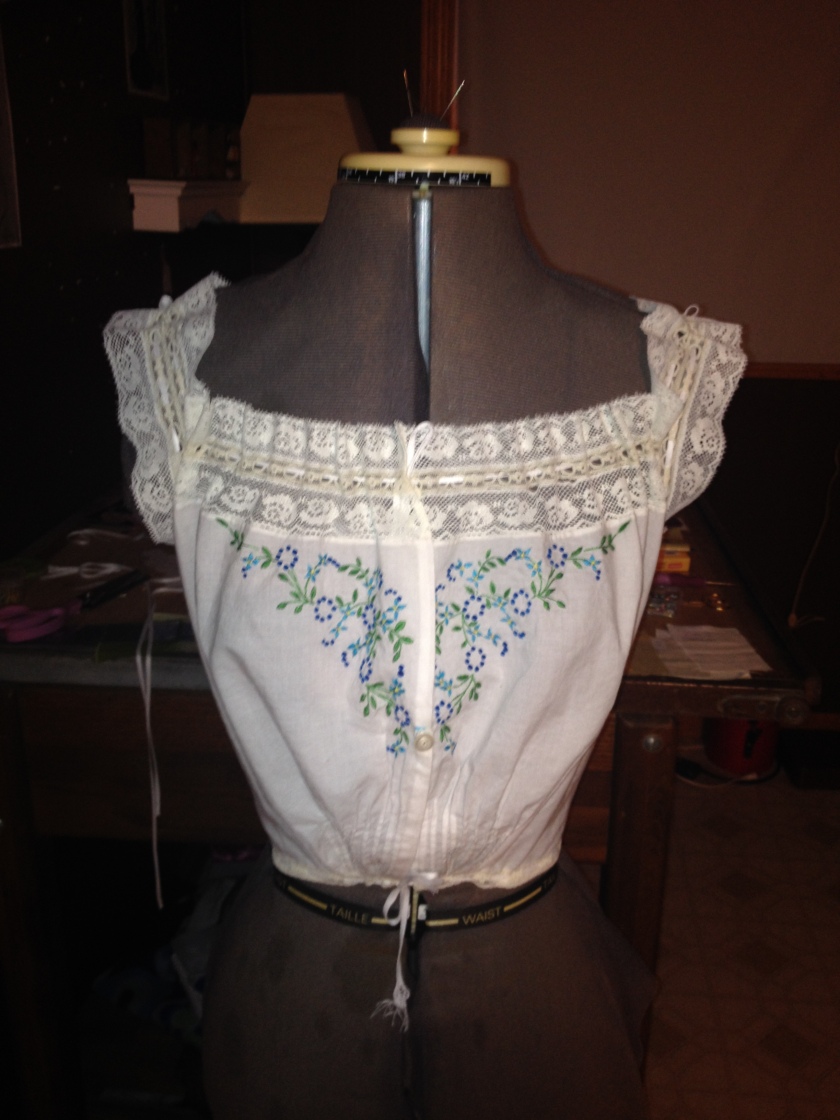This is a review for the wonderful Laughing Moon #113 pattern. Men started wearing corsets in the early 1800’s (I think I read somewhere that they started as early as the 1790’s, but I’m not certain). During the Regency era men were wearing them for a small waist, back support/protection, and to help with the fit and shape of the popular silhouette of the time. Later in the Victorian and Edwardian era’s, men’s corsets were used for a ‘slight’ narrowing of the waist, fit, back support, ect…
Material: 100% cotton coutil and 100% silk dupioni
Pattern: Laughing Moon #113
Year: 1894-1909
Notions: Metal busk, metal grommets, spiral steel and metal boning, 100% cotton thread, 100% cotton lacing cord, 100% cotton boning tape, 100% polyester twill tape (grimace)
How historically accurate is it? I would say this is about 97%. The construction methods and materials are authentic to the time period. The only unauthentic thing is the polyester twill tape.
Hours to complete: unknown
First worn: Spring of 2016
Total cost: Unknown
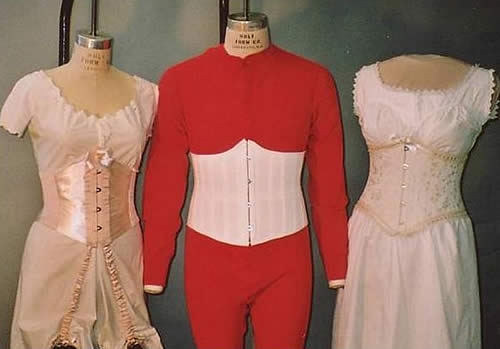
This pattern was spectacular!!! I’m giving it 5 stars! I had already made a corset using Jennifer Rosbrugh‘s AMAZING corset sewing class, so I knew the jist of how they go together which helped a lot! The instructions were extremely clear, they came in a little booklet, which in my opinion is better than a bunch of papers stapled together! The fit was incredible, even in the mockup! I couldn’t have dreamed for a better fitting corset!
The support of the back is amazing, and the garment is extremely flexible. I can easily bend over to pick things up and even do sit-ups in it! (Although I wouldn’t recommend doing sit ups in one! I only did it to prove to my friends that it’s possible).
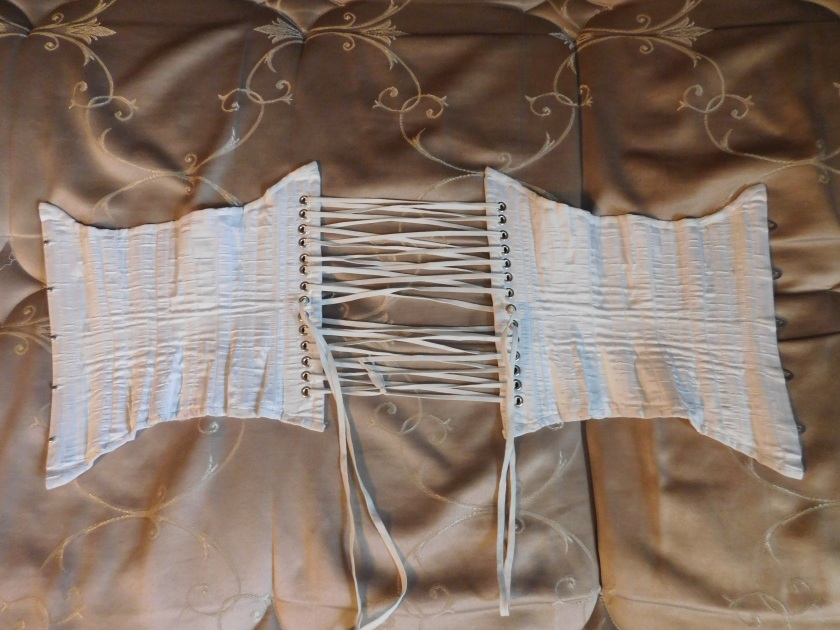
I wasn’t going for the cinched waist look, as I was trying for a more 1900’s silhouette than a Regency silhouette, and also because I wanted to use it under my modern clothes to correct my posture and give me back support, but this corset can cinch, I had to try it once and I found that with this corset I can go from 29″ to 26″ very easily (Which is perfect for that Regency pigeon breasted look men were going for), and my sister can go from 30″ to 25 1/2″ in it as well.
I did make this corset out of coutil and an outerlining of silk dupioni. If you are going to be wearing a men’s corset under jeans and a shirt don’t make the outerlining of silk dupioni! The jeans have over time rubbed the silk threadbare and it started fraying in less than three weeks of wearing it. It now looks like a well used antique ![]() 🙂
🙂
In conclusion I will definitely be using this pattern again in the future and I already have a couple of male friends asking me to make them one as well, simply for the amazing back support and since it can narrow the waist into the now popular “body builder” torso look, which can help the chest look bigger. It was a breeze to sew and is so incredibly comfortable!!! Thank you JoAnn Peterson for making this wonderful pattern! It was the only one I could find for a historically accurate men’s corset!
